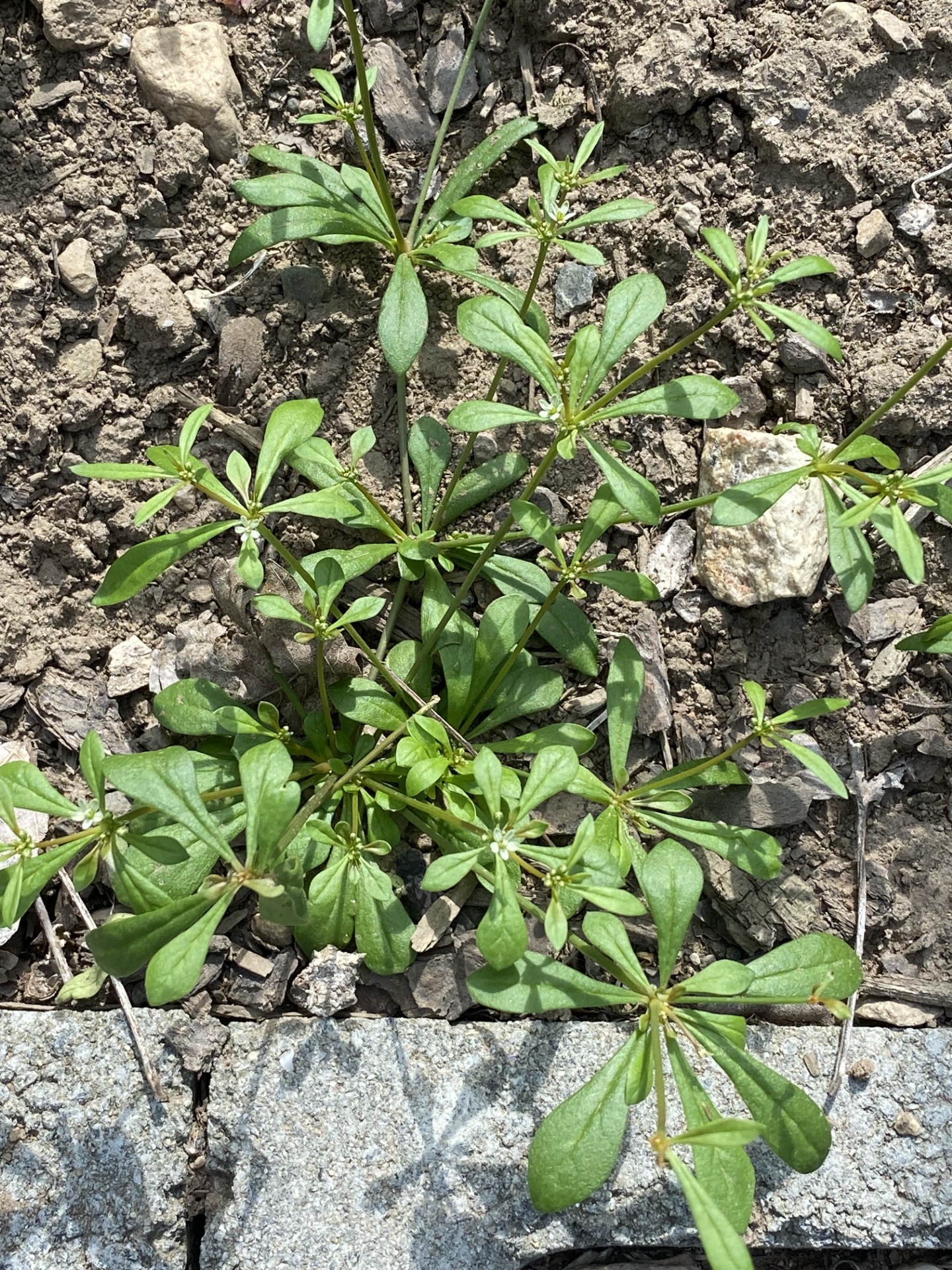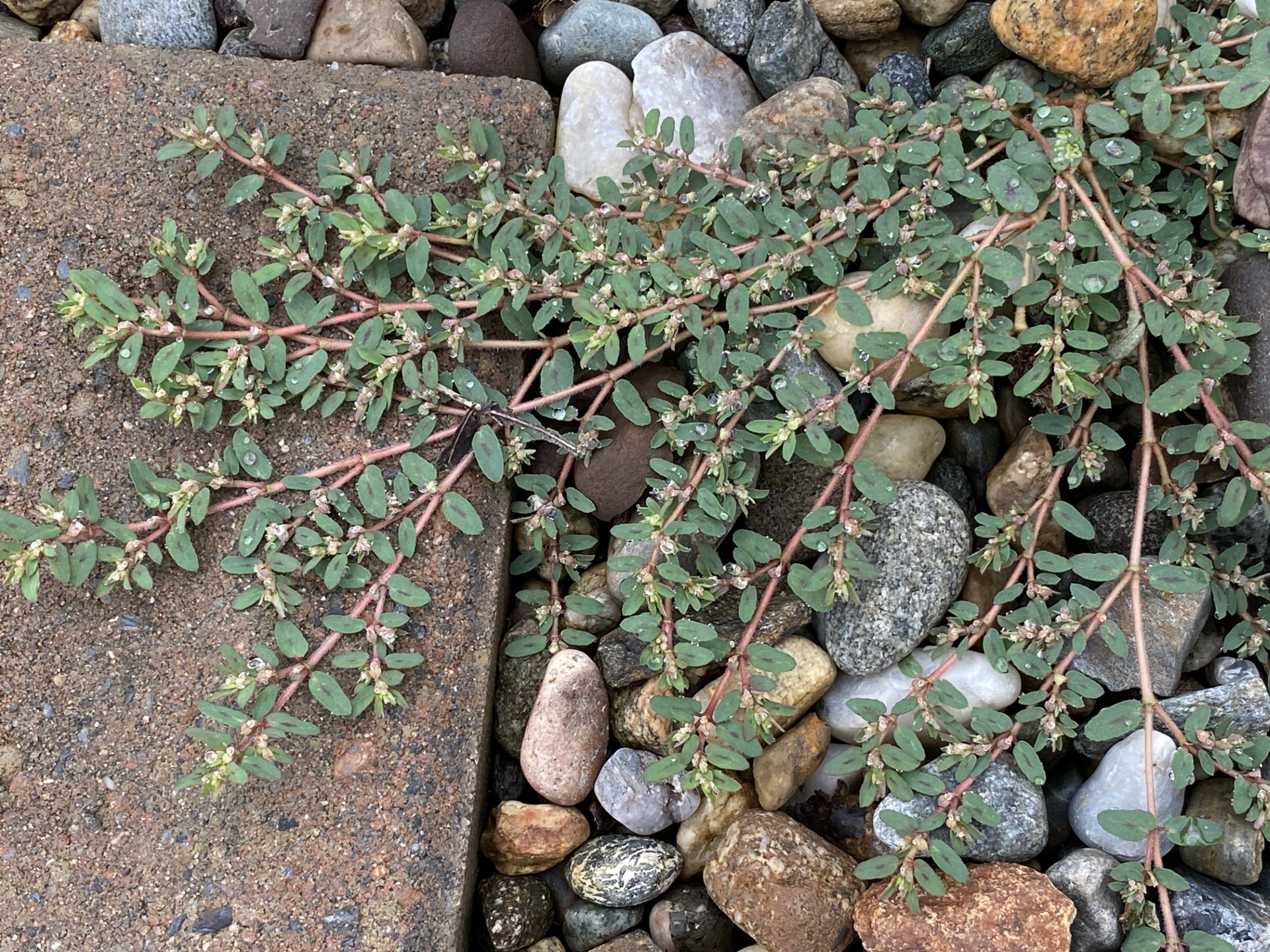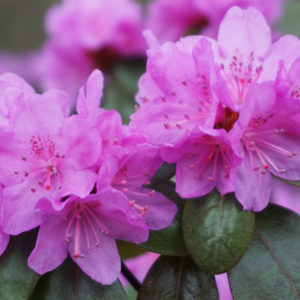Common Purslane, Carpetweed and Spotted Spurge
At this point in summer, lawns in particular can be stressed from lack of water. This is when vigorous annual weeds can start to take a hold. Below are three ground-cover type weeds that will show up in lawns, vegetable gardens and even flower borders – in fact anywhere there is bare, uncultivated soil and they are not fussy as to the condition of the soil. They all produce a tap root to take advantage of what moisture is available, and with dense, spreading foliage are not only able to conserve moisture under their leaves but also out-compete other plants, particularly turf.
 Purslane and Carpetweed | Common purslane (Portulaca oleracea) is a succulent branching plant with reddish stems, plump oval leaves and small yellow flowers. Look at it closely and you will see the family resemblance to P. grandiflora, moss rose, which is a great drought tolerant annual for containers and hanging baskets. It is edible and has been cultivated for several thousand years for its medicinal and nutritional value and has been naturalized here for centuries. Its flowers are self-fertile meaning pollinators are not necessary, and its seed pods burst open spreading copious amounts of small seeds, which can survive dormant for a couple of decades. Each plant can spread up to 18 inches which means it is capable of choking and killing quite a section of lawn. It will continue to grow until frosts kill it, whereupon it will leave unsightly holes in a lawn. |
 Carpetweed | Carpetweed (Mollugo verticillata) has a similar growth habit, producing multiple radiating stems with whorled clusters of needle-shaped leaves. As they continue to grow and branch, they become denser thus earning its name carpetweed. It has small white, star-shaped flowers which also set a large amount of seed. |
 Spotted Spurge | Spotted spurge (Chamaesyce maculata L.; Synonym: Euphorbia maculata L.) is another branching weed growing from a taproot. It is a member of the euphorbia family and as such its stems produce a milky sap, which can be a skin irritant for some people. Therefore, always wear gloves when pulling this weed. It has masses of tiny white to pink flowers which produce sticky seed capsules, thus improving its chances of spreading by sticking to passing animals. |
To get rid of these weeds there are several options. If there are only a few, hand pulling or hoeing works well, and where lawns are concerned, the sooner this is done the smaller the bare patch will be. These weeds can be sprayed with a general herbicide, if nothing of value is within spraying range, otherwise on lawns a selective herbicide for broadleaf weeds can be used. Please be aware that this type of herbicide will also damage ornamental plants, so it should not be used in flower beds.
In the long term, it is best to prevent these weeds getting a hold. With flower beds this is where mulch greatly reduces opportunistic weeds along with a weed preventer. Where lawns are concerned, working to create robust turf means that weeds find it difficult to take root. Steps to do this involve appropriate fertilization, adequate moisture and soil amendments where necessary. One step that can be taken this time of year is to apply Johnathan Green’s Love Your Soil®.
If you have questions, please ask one of our sales staff or visit our website’s lawn care guidelines.
Lawn Maintenance – Weston Nurseries
Sources:
Common Purslane, Portulaca oleracea – Wisconsin Horticulture
Lawn and Turfgrass Weeds: Spotted Spurge – Chamaesyce Maculata L. (psu.edu)







